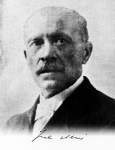José Miró Argenter facts for kids
Quick facts for kids
José Miró Argenter
|
|
|---|---|
 |
|
| Born | March 4, 1851 Sitges, Catalonia, Spain |
| Died | May 2, 1925 (aged 74) Havana, La Habana Province, Cuba |
| Allegiance | |
| Branch | Carlist Army Cuban Liberation Army |
| Years of service | 1895–1898 |
| Rank | Major General |
| Battles/wars | Third Carlist War Cuban War of Independence |
| Spouse(s) |
Luz Cardona y Cardona
(m. 1891–1920) |
José Miró Argenter, also known as José de Miró Argenter, was a brave general and writer from Catalonia, Spain. He became an important leader in the Cuban War of Independence. He was a Major General in the Cuban Liberation Army and worked closely with General Antonio Maceo. Later, he wrote a famous book called Cuba: Chronicles of the War about his experiences in the war.
Contents
Biography
Early Life and Family
José Miró Argenter was born on March 4, 1851. His father, José Miró Armengol, worked for the local government in Sitges, Spain. José had three siblings. One brother was the painter Joaquim de Miró. His sister Rosa was the mother of another famous painter, Joaquim Sunyer.
Life in Spain
José studied high school in Barcelona. In 1869, he began studying medicine at the university. However, he decided to leave his medical studies. He joined the Carlist Army, which was a group fighting in a civil war in Spain. In this army, he became a lieutenant and led a company of soldiers.
Moving to Cuba
In 1874, José moved to Havana, Cuba. He started working for a business there. Two years later, because of his health, he took a job as a foreman at a sugar mill near Santiago de Cuba. There, he met Major General Antonio Maceo, a key leader in the Cuban fight for freedom.
José became a journalist in Cuba. One of his first articles, El Juez y el Negro (The Judge and the Black Man), caused him trouble. He was arrested and sent away from his home for over three years.
After this, he settled in Holguín. He became the director of a newspaper called La Doctrina. In 1891, he married Luz Cardona y Cardona in Holguín. José became very involved in the Cuban independence movement. In 1893, he started another newspaper called El Liberal. His first daughter, Remedios, was born in 1894. He also helped with important plans for the revolution in eastern Cuba.
Cuban War of Independence
When the Cuban War of Independence began, José Miró Argenter joined on the very first day. He led a group of patriots from Holguín. He joined his friend Maceo with the rank of colonel.
On April 14, 1895, he fought in the battle of Ciego La Rioja. When Maceo arrived on the island, he confirmed José's rank. He also made José a part of his main staff. José showed great bravery in the battle of Peralejo. Because of his actions, he was promoted to Brigadier General on September 29. Soon after, he became the Chief of Staff for the invading army column. He traveled with this column from Baraguá.
José was always by Maceo's side during the invasion and the entire campaign in western Cuba. He was a hero in battles like Iguará, La Lechuza, Cacarajícara, Rubí, and Bejerano. He helped Maceo cross the Mariel to Majana trail. Three days later, José was wounded in San Pedro, where Maceo also fell. For his service in the Battle of Mal Tiempo, he was suggested for the rank of Major General. He officially received this rank at the end of the war.
José was very sad about Maceo's death at the Battle of San Pedro. He went to Camagüey and then to Manzanillo, Cuba. He was less active for the rest of the war. It is not clear if José Miró Argenter ever met José Martí, another important Cuban leader. In a letter from May 7, 1895, Martí wrote to José Miró Argenter, saying he wished to meet him in person someday.
Later Years and Writings
After the war, José Miró Argenter was appointed Inspector of the Eastern Department. He also became Secretary of the board that managed the Cuban Liberation Army's affairs. In the early years of the Cuban Republic, he was in charge of the Liberation Army's records. He also started working in journalism again.
In 1900, his second son was born in San Luis, Santiago de Cuba. He was named Antonio Maceo Miró Cardona, in honor of General Maceo. On August 22, 1902, his third child, José Miró Cardona, was born. This son would later become Cuba's provisional prime minister in 1959.
José's wife, Luz Cardona, passed away in 1920. José Miró Argenter himself died in Havana on May 2, 1925.
From 1899 to 1909, he wrote his most famous work, Crónicas de la Guerra (Chronicles of the War). This book was a detailed record of military actions and his own experiences. It included a very clear description of the events surrounding Antonio Maceo's death, along with other battles. He also wrote "Death of General Maceo" and "Notes on the life of Antonio Maceo Grajales" in 1897. In 1914, he wrote a play called "El Pacífico." He also published a novel called "Salvador Roca" in 1910.
See also
 In Spanish: José Miró Argenter para niños
In Spanish: José Miró Argenter para niños

